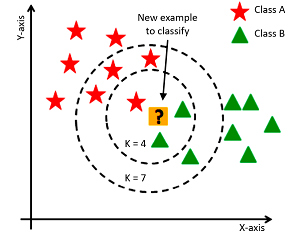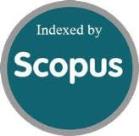Recursive Feature Elimination and Optimized Hybrid Ensemble Approach for Early Heart Disease Prediction
DOI:
https://doi.org/10.46604/aiti.2024.13825Keywords:
ensemble machine learning, heart disease, hyperparameter tuning, recursive feature eliminationAbstract
Early machine learning prediction improves patient health and prevents heart disease, one of the leading causes of morbidity worldwide. However, challenges such as noise and incomplete data often obscure patterns critical for accurate predictions, and single-classifier models may fail to capture data complexity. This study aims to develop a robust ensemble model leveraging advanced feature selection techniques to enhance prediction accuracy. Various machine-learning algorithms are examined. Recursive feature elimination is applied to remove irrelevant features, improving model performance. The hybrid ensemble method achieves 93.15% accuracy, 93.15% precision, and 92.97% recall, outperforming Principal Component Analysis and symmetrical uncertainty methods. This research sets a benchmark for future studies by leveraging hyperparameter tuning and advanced feature selection to optimize feature reduction and machine learning models.
References
WHO, Cardiovascular Diseases, https://www.who.int/health-topics/cardiovascular-diseases/#tab=tab_1, accessed on 2021.
American Heart Association, Classes of Heart Failure, https://www.heart.org/en/health-topics/heart-failure/what-is-heart-failure/classes-of-heart-failure, accessed on 2021.
American Heart Association, Heart Failure, https://www.heart.org/en/health-topics/heart-failure, accessed on 2021.
S. Shalev-Shwartz and S Ben-David, Understanding Machine Learning: From Theory to Algorithms, New York: Cambridge University Press, 2014.
T. Hastie, R. Tibshirani, and J. H. Friedman, The Elements of Statistical Learning: Data Mining, Inference, and Prediction, 2nd ed., New York: Springer, 2009.
S. Marsland, Machine Learning: An Algorithmic Perspective, 2nd ed., Boca Raton, FL: CRC Press, 2015.
UCI, Heart Disease, https://archive.ics.uci.edu/dataset/45/heart+disease, accessed on 2021
D. Shah, S. Patel, and S. K. Bharti, “Heart Disease Prediction Using Machine Learning Techniques,” SN Computer Science, vol. 1, no. 6, article no. 345, 2020.
M. Tarawneh and O. Embarak, “Hybrid Approach for Heart Disease Prediction Using Data Mining Techniques,” Advances in Internet, Data and Web Technologies: The 7th International Conference on Emerging Internet, Data and Web Technologies, pp. 447-454, 2019.
A. K. Ramotra and V. Mansotra, “A Hybrid Cluster and PCA-Based Framework for Heart Disease Prediction Using Logistic Regression,” Rising Threats in Expert Applications and Solutions: Proceedings of FICR-TEAS 2020, pp. 111-117, 2021.
S. Singh and V. Shrivastava, “The Analysis of Machine Learning Techniques for Heart Disease Prediction,” Proceedings of International Conference on Communication and Computational Technologies: ICCCT-2019, pp. 137-143, 2020.
M. M. Ali, B. K. Paul, K. Ahmed, F. M. Bui, J. M. Quinn, and M. A. Moni, “Heart Disease Prediction Using Supervised Machine Learning Algorithms: Performance Analysis and Comparison,” Computers in Biology and Medicine, vol. 136, article no. 104672, 2021.
D. E. Salhi, A. Tari, and M. T. Kechadi, “Using Machine Learning for Heart Disease Prediction,” Advances in Computing Systems and Applications: Proceedings of the 4th Conference on Computing Systems and Applications, pp. 70-81, 2021.
K. Burse, V. P. S. Kirar, A. Burse, and R. Burse, “Various Preprocessing Methods for Neural Network Based Heart Disease Prediction,” Smart innovations in communication and Computational Sciences: Proceedings of ICSICCS-2018, pp. 55-65, 2019.
Y. Muhammad, M. Tahir, M. Hayat, and K. T. Chong, “Early and Accurate Detection and Diagnosis of Heart Disease Using Intelligent Computational Model,” Scientific Reports, vol. 10, article no. 19747, 2020.
A. Singh and R. Kumar, “Heart Disease Prediction Using Machine Learning Algorithms,” International Conference on Electrical and Electronics Engineering, pp. 452-457, 2020.
C. Krittanawong, H. U. H. Virk, S. Bangalore, Z. Wang, K.W. Johnson, R. Pinotti, et al., “Machine Learning Prediction in Cardiovascular Diseases: A Meta-Analysis,” Scientific Reports, vol. 10, article no. 16057, 2020.
S. S. Yadav, S. M. Jadhav, S. Nagrale, and N. Patil, “Application of Machine Learning for the Detection of Heart Disease,” 2nd International Conference on Innovative Mechanisms for Industry Applications, pp. 165-172, 2020.
A. Akella and S. Akella, “Machine Learning Algorithms for Predicting Coronary Artery Disease: Efforts Toward an Open Source Solution,” Future Science OA, vol. 7, no. 6, article no. FSO698, 2021.
M. T. García-Ordás, M. Bayón-Gutiérrez, C. Benavides, J. Aveleira-Mata, and J. A. Benítez-Andrades, “Heart Disease Risk Prediction Using Deep Learning Techniques With Feature Augmentation,” Multimedia Tools and Applications, vol. 82, no. 20, pp. 31759-31773, 2023.
F. Yaghouby, A. Ayatollahi, and R. Soleimani, “Classification of Cardiac Abnormalities Using Reduced Features of Heart Rate Variability Signal,” World Applied Sciences Journal, vol. 6, no. 11, pp. 1547-1554, 2009.
B. M. Asl, S. K. Setarehdan, and M. Mohebbi, “Support Vector Machine-Based Arrhythmia Classification Using Reduced Features of Heart Rate Variability Signal,” Artificial Intelligence in Medicine, vol. 44, no. 1, pp. 51-64, 2008.
U. Nagavelli, D. Samanta, and P. Chakraborty, “Machine Learning Technology-Based Heart Disease Detection Models,” Journal of Healthcare Engineering, vol. 2022, article no. 7351061, 2022.
N. Biswas, M. M. Ali, M.A. Rahaman, M. Islam, M. R. Mia, S. Azam, et al., “Machine Learning-Based Model to Predict Heart Disease in Early Stage Employing Different Feature Selection Techniques,” BioMed Research International, vol. 2023, article no. 6864343, 2023.
A. A. Ahmad and H. Polat, “Prediction of Heart Disease Based on Machine Learning Using Jellyfish Optimization Algorithm,” Diagnostics, vol. 13, no. 14, article no. 2392, 2023.
K. Saikumar, V. Rajesh, G. Srivastava, and J. C. W. Lin, “Heart Disease Detection Based on Internet of Things Data Using Linear Quadratic Discriminant Analysis and a Deep Graph Convolutional Neural Network,” Frontiers in Computational Neuroscience, vol. 16, article no. 964686, 2022.
M. A. Jabbar, B. L. Deekshatulu, and P. Chandra, “Graph Based Approach for Heart Disease Prediction,” Proceedings of the Third International Conference on Trends in Information, Telecommunication and Computing, pp. 465-474, 2013.
K. M. Alfadli and A. O. Almagrabi, “Feature-Limited Prediction on the UCI Heart Disease Dataset,” Computers, Materials & Continua, vol. 74, no. 3, pp. 5871-5883, 2023.
R. R. Sarra, A. M. Dinar, M. A. Mohammed, and K. H. Abdulkareem, “Enhanced Heart Disease Prediction Based on Machine Learning and Χ2 Statistical Optimal Feature Selection Model,” Designs, vol. 6, no. 5, article no. 87, 2022.
F. Ali, S. El-Sappagh, S. R. Islam, D. Kwak, A. Ali, M. Imran, et al., “A Smart Healthcare Monitoring System for Heart Disease Prediction Based on Ensemble Deep Learning and Feature Fusion,” Information Fusion, vol. 63, pp. 208-222, 2020.

Published
How to Cite
Issue
Section
License
Copyright (c) 2025 Jitendra P Chaudhari, Kishan P Patel, Hiren K Mewada; Hardikkumar Sudhirbhai Jayswal, Yogesh P Kosta, Kanchan S Bhagat; Shubhangi D Kirange

This work is licensed under a Creative Commons Attribution-NonCommercial 4.0 International License.
Submission of a manuscript implies: that the work described has not been published before that it is not under consideration for publication elsewhere; that if and when the manuscript is accepted for publication. Authors can retain copyright in their articles with no restrictions. is accepted for publication. Authors can retain copyright of their article with no restrictions.
Since Jan. 01, 2019, AITI will publish new articles with Creative Commons Attribution Non-Commercial License, under The Creative Commons Attribution Non-Commercial 4.0 International (CC BY-NC 4.0) License.
The Creative Commons Attribution Non-Commercial (CC-BY-NC) License permits use, distribution and reproduction in any medium, provided the original work is properly cited and is not used for commercial purposes.







